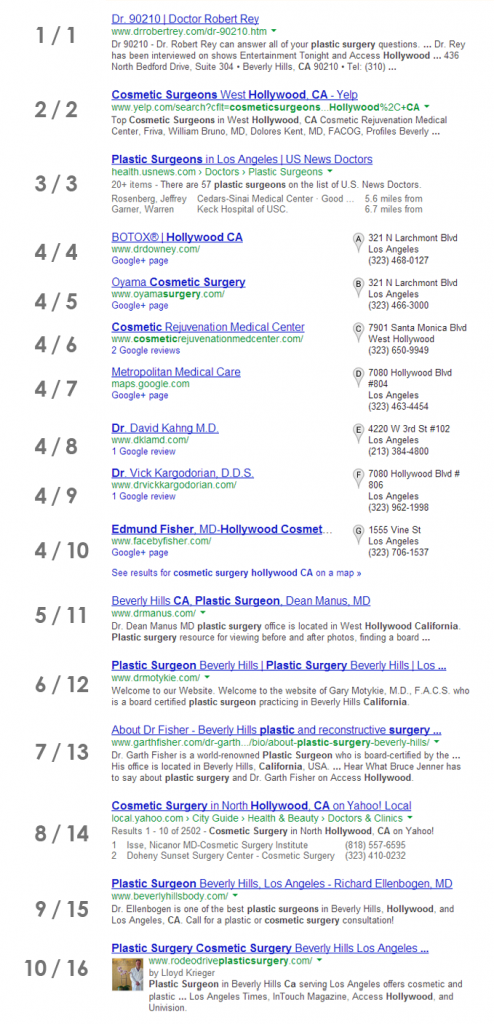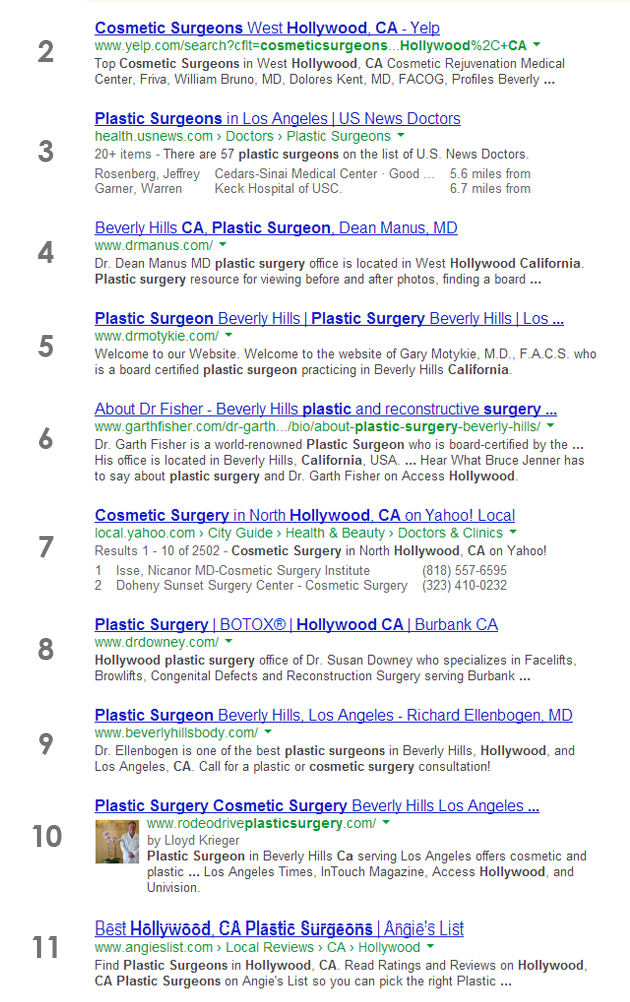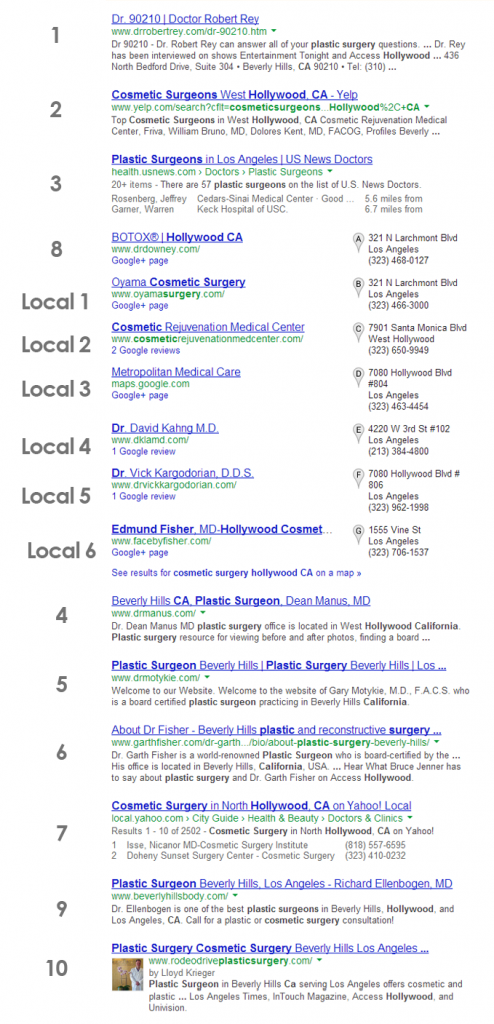Google’s SERPs have changed their appearance since different types of search results have become prominent. When you run a search, you’ll find paid results, local listings, images, videos, and organic results mixed up in one page. Today, I want to share how you can determine your true SERPs placement more accurately in order to adjust your strategy appropriately.
The SERPs Page and Blended Results
The image to the right shows the search results for the query “cosmetic surgery Hollywood CA.” I’ve omitted the paid search results on top and news listings at the bottom, and left the local and organic search results because we will be focusing on those.
There are two sets of numbers on each listing: The first number is how a person with no SEO experience would count the results if they were to consider the type of listing: all local listings are counted as one, and you count normally from 2 onwards for the organic listings. The second number is how people would count the results without considering anything but their placement on the page. What we end up with is ten “pure” results and sixteen organic ones.
What your target audience (and you!) may not realize is that some of these results are blended results. These organic results are treated as local listings, but they rank differently organically. In order to get the real rankings and analyze your campaigns better, you need to see which local results are blended, and sort the true organic rankings of the pages.
Sorting Blended from Local Results
In order to sort blended listings from local results, you’ll need to use Google’s “start=” URL parameter. A basic Google query uses this parameter to separate Google’s SERPs. The listing count starts from zero and moves all the way to nine for the first page of the SERPs, then from ten onwards for the second page, and so on.
In order to get the stripped-down, organic search results-only version of the SERPs, you’ll need to tweak this parameter. Start by typing the following URL:
https://www.google.com/search?query=your+search+term&start=1
You’ll need to use the + sign in between words if your search query is more than one word. To illustrate, our search query for our example above will look like this:
https://www.google.com/search?query=cosmetic+surgeon+hollywood+CA&start=1
What you will get is this page, starting with the #2 listing on the SERPs:
As you can see, one of the local results appeared on our organic listings. This means it’s a blended result treated as a local listing on the SERPs page that we did not tweak.
Getting the Actual Rankings
From these results, you can now infer what the SERPs would’ve looked like without the influence of the local listings. The example I’ve used above shows some websites moving up one rank now that we’ve made our adjustment. The blended result figures into the ranking as follows:
What we end up with is the original ten organic results, accompanied by six (not seven) purely local results. This information now allows you to analyze your campaigns more accurately and see where you’re ranking, and where you can improve. The six purely local listings, for example, may not have strong SEO because they did not appear on the organic listings when we tweaked the code, but they are optimized well for local. The blended result, meanwhile, is doing a good job at optimization because it appears on both listings.
The main takeaways here are:
-
Google no longer exclusively focuses on one factor to rank a website for organic or local SERPs. These two are overlapping, and they will continue to do so as the search engine moves towards providing more personalized search. You’ll need to optimize aggressively for both if you are to have a chance at appearing on the first page of the SERPs.
-
You can still get your clients on the first page of the SERPs if you are having difficulty breaking into the organic search listings. Focusing on local may get you the local search listing on the first page of the SERPs. It’s important to update your business listing on Google+ Local to help your campaigns get first-page visibility even as you are optimizing them for organic search. Optimizing for local can also influence your organic rankings and help you move up, given the blended nature of search algorithms today.
We’re more than willing to help you develop an online marketing strategy that ensures you rank for both organic and local search. Our white label SEO plans integrate local search into our organic SEO suite to help you get started. Talk to your account manager or sign up for free today to get started.





